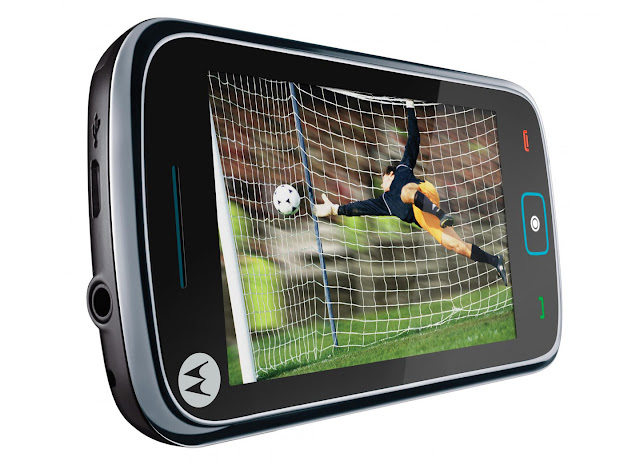The Motorola EX128 Unlocked Phone is neither an example of a hybrid-style phone that has some features of more modern smartphones and yet relies on SIM technology to function.
Using the EX128, one has to insert a pair of SIMs into special slots in the phone. Instead of using onboard memory and a microprocessor to drive the phone, the SIMs handle all of the work. The model that is used is that of a phonebook. Each SIM is individually addressable so that if one is calling on one SIM and the phone receives a call, the other SIM activates and directs the call to either call-waiting, if one has that feature installed or to voicemail.
There is a slot available for an 8GB microSD memory card, but that is used for items such as emails, texts or memos one receives or places. The numbers that are called are stored on the SIM. Indeed, a call history is also stored on the SIM. The EX128 can store up to 1,000 phone numbers.
Using Java as its operating system, the EX128 has several apps preinstalled. The apps include a phonebook, memo pad and access to email or texting. One app opens a small QWERTY-style keyboard at the bottom of the 3.2-inch high-resolution screen whose resolution is 240 by 400. This display delivers a deep range of colors and its contrast is excellent. One will find the blacks are surprisingly rich when using this display.
The EX128's touchscreen keyboard features keys that are on the small side, though, and one will find the need to use a stylus to text or send emails because the keys are not large. This means that one's text input will be slowed, although it does support predictive text input which means that it studies one's text inputs and anticipates the completed word which can speed things up, a bit, as well. Apps are also built in that allow one to send SMS or MMS texts and to receive and send emails.
The EX128 is equipped with an FM stereo radio that recognizes the RDS system. RDS is a Radio Directory Service that takes information from the radio station tuned in and displays it on screen. The information, for example, ranges from type of station to music played. The sound output one will find is more than reasonable from a 4.2 inch by 2.2 inch by 0.5 inch device that weighs only 3.2 ounces. Its light weight works to one's advantage if you spend hours on the phone. It also includes a voice memo app, while supporting audio that can be loaded from the memory card. Audio support includes MP3, WAV and eAAC+.
That phone time is limited to three hours as the EX128 will operate for three hours before it needs a charge, however, there is a micro-USB 2.0 port that allows one to charge the lithium-ion battery rapidly.
The EX128 is a quad-band phone that operates on the 850, 900, 1800 and 1900 MHz frequency bands. It is compatible with AT&T and T-Mobile's GSM system, as well as GPRS and EDGE. It is not compatible with CDMA systems offered by Verizon, Alltell and Sprint.
It also supports the Bluetooth standard so you can sync the phone with other Bluetooth devices or, if you have a PC equipped with Bluetooth, you can sync your available apps to the PC.
The EX128 is, as noted, a hybrid phone. It is a more than reasonable alternative to a far more expensive smartphone with its extensive feature base, if one does not need all of the features. Its light weight and speed, as well as its ability to store phonebooks independent of memory is considered a plus by many people.
The bottom line is the EX128 is a fine example of a hybrid phone that offers some functionality for one who needs a lightweight phone primarily for calling, emailing and texting.

0 comments:
Post a Comment